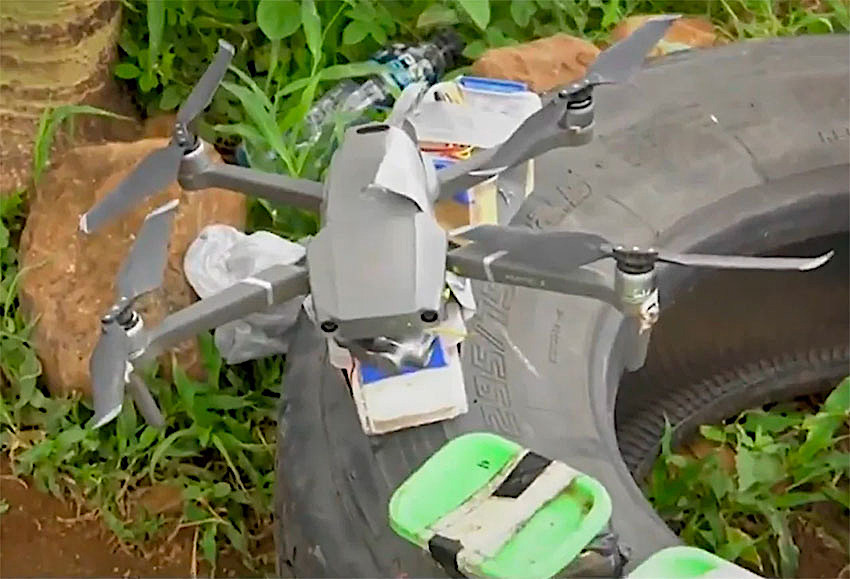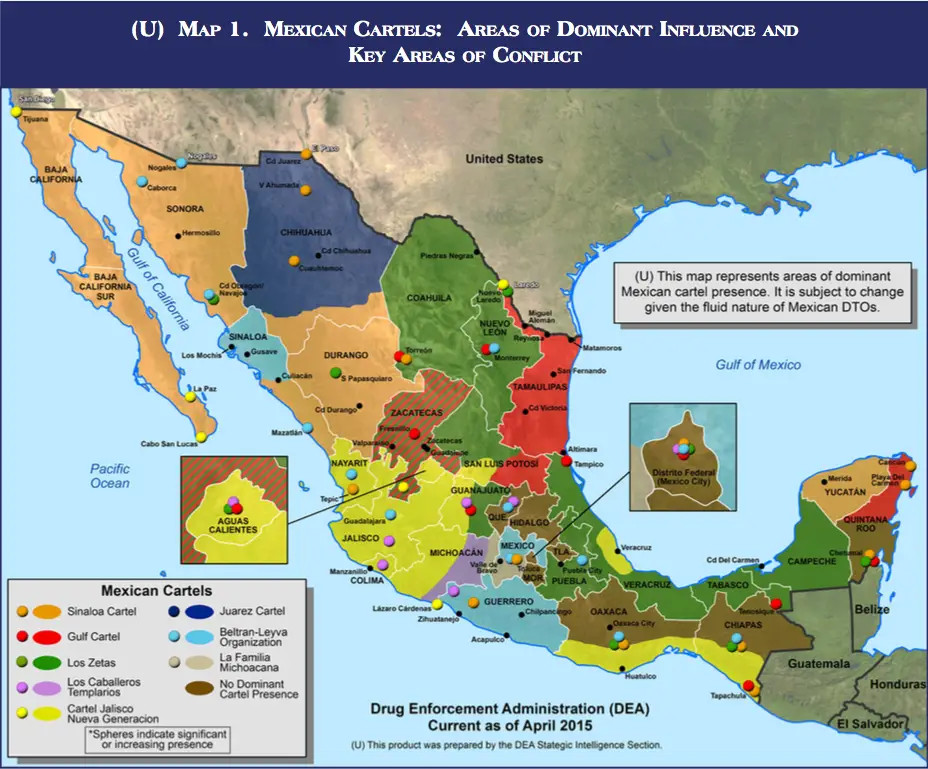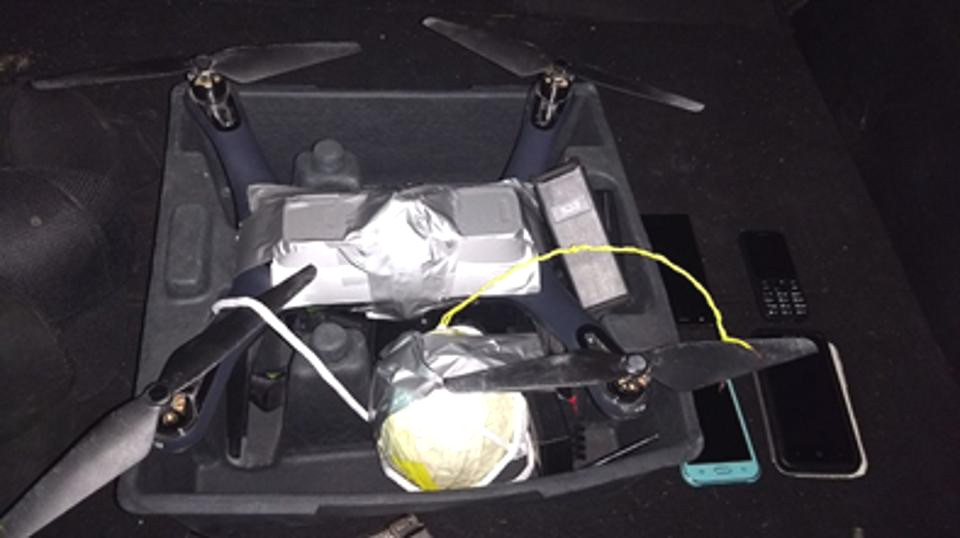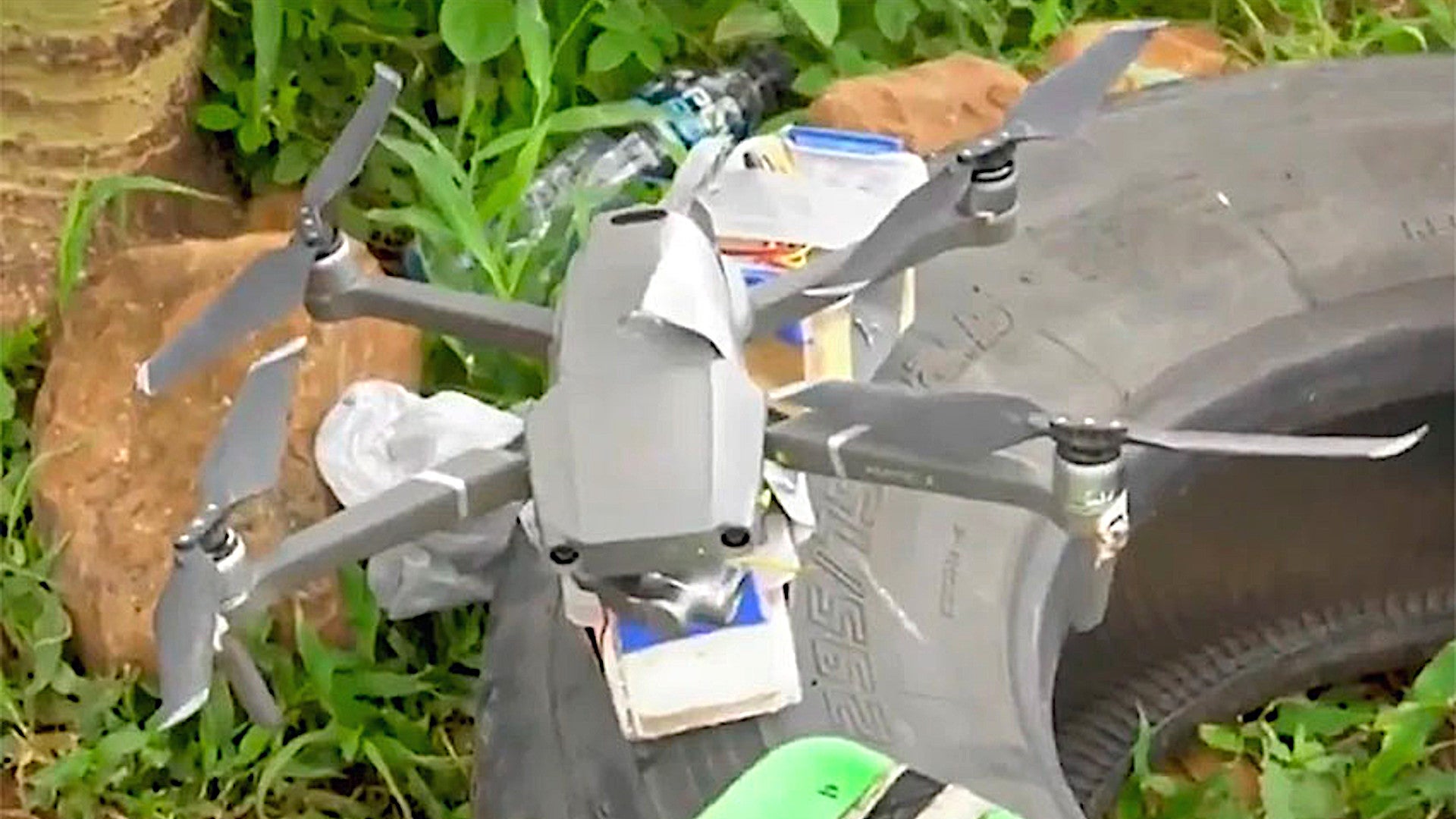Mexico’s drug cartels are notoriously well armed and equipped, with some possessing very heavy weaponry, including armored gun trucks sporting heavy machine guns. Now at least one of these groups appears to be increasingly making use of small quadcopter-type drones carrying small explosive devices to attack its enemies. This is just the latest example of a trend that has been growing worldwide in recent years, including among non-state actors, such as terrorists and criminals, which underscores the potential threats commercially-available unmanned systems pose on and off the battlefield.
A civilian self-defense militia in the city of Tepalcatepec, in Mexico’s southwestern Michoacan state, reportedly recovered two dozen explosive-laden quadcopters from a car that a team of sicarios – cartel hitmen – had apparently abandoned, possibly after a failed or aborted hit, on July 25, 2020. The bombs attached to the drones consisted of Tupperware-like containers filled with C4 charges and ball bearings to act as shrapnel.

The vehicle and its contents were said to be tied to the Cártel de Jalisco Nueva Generación (CJNG), or Jalisco New Generation Cartel, which has its main hub in neighboring Jalisco state, but exerts control over a wider swatch of territory. This includes areas much further down Mexico’s southwestern Pacific coastline and along the Gulf of Mexico on the opposite side of the country.
CJNG first emerged in 2009 as an offshoot of the Milenio Cartel and has since waged a particularly violent campaign against many of Mexico’s other drug cartels, as well as Mexican authorities and civilian self-defense organizations, growing in size and scope in the process. As of July, American authorities estimated that CJNG was responsible for the movement of approximately one-third of all drugs from Mexico into the United States. It has also been working to expand its operations into Europe and Asia.

That revenue has clearly translated into new weapons, vehicles, and equipment for the CJNG’s sicarios and other footsoldiers. In July, the cartel released a particularly striking video of a convoy of camouflage-painted trucks, pickups, and SUVs, some with mounted weapons and very visible add-on armor, together with heavily armed personnel in tactical gear, that all looked more like a military unit than a criminal gang.

These personnel, who all shouted of the nickname of their top boss, Nemesio “El Mencho” Oseguera Cervantes, throughout the footage, reportedly belong to a “special forces” contingent within the cartel’s overall force structure. This video followed a failed CJNG assassination attempt against Mexico City’s police chief Omar Garcia Harfuch in June. Harfuch was wounded in the shootout and two of his bodyguard’s died.
CJNG’s growing resources have also translated into its new aerial capabilities. There were reports in April that CJNG had been dropping improvised explosive devices from small, conventional manned aircraft in attacks on members of the Tepalcatepec self-defense militia. The cartel apparently dropped this tactic quickly after Mexican authorities stepped up aerial surveillance in the region and has since shifted to using the diminutive drones.
Quadcopters with explosives believed to belong CJNG were recovered in the city of Puebla, in the state of the same name, southeast of Mexico City, in April, as well. Mexican officials said they believed those had been destined for attacks on the Santa Rosa de Lima Cartel in Guanajuato state to the northwest. The discovery of those drones led to raids that found more quadcopters, as well as various electronics and bomb-making supplies, including more C4.

It’s not surprising at all that CJNG, especially, has turned to small unmanned systems as a means of carrying out its various violent campaigns throughout Mexico. Mexican cartels, among other criminal groups, have already been using them to carry drugs over walls and past other barriers, as well as conduct surveillance. There have been more sporadic reports of other cartels using small explosive-armed drones since at least 2017, too.
The barrier to entry when it comes to crafting small bomb-carrying quad and hexcopter-type drones is notably low, in general. This is something The War Zone has highlighted on multiple occasions in the past, which makes the concept particularly attractive to non-state actors.
In 2018, a group opposed to dictatorial Venezuelan President Nicolas Maduro attempted to assassinate him at a public rally using a commercially available multi-rotor drone system. This came years after ISIS terrorists had very much brought the concept to an actual battlefield in Iraq.
Small drones of various kinds of improvised munitions had steadily proliferated among terrorists and other armed groups in Iraq and Syria since then. Russia’s Syrian outpost at Khmeimim Air Base has been subjected to a regular stream of drone attacks since 2018.
In July, authorities in the Iraqi capital Baghdad recovered a quadcopter drone with a very purpose-built-looking looking bomb underneath in a neighboring near the heavily fortified Green Zone area that is home to various government buildings and Embassies, including that of the United States. Iranian-backed militias often use these adjacent areas to stage rocket attacks on the U.S. Embassy compound.
These are just a small number of the readily available examples of this tactic being employed. In fact, when it comes to the danger of drones being used for gangland assassinations, Japanese authorities warned back in 2015 about Yakuza families doing exactly what CJNG is doing right now in Mexico.
Even larger nation-state militaries are starting to leverage the relative simplicity of hobby-like quadcopter drones as a starting place for more complex weaponized systems, including designs capable of operating cooperatively in autonomous swarms. Turkey is now putting such a drone system into production, which you read all about here.
This reality has left the United States, among others, scrambling to catch up when it comes to developing countermeasures. The U.S. military, as a whole, has been investigating a wide array of different counter-drone technologies to handle these lower-tier threats, ranging from jammers to directed-energy weapons, including both lasers and high-power microwave beams.
“I argue all the time with my Air Force friends that the future of flight is vertical and it’s unmanned,” U.S. Marine General Kenneth McKenzie, head of U.S. Central Command, said at a public event in June. “I’m not talking about large unmanned platforms, which are the size of a conventional fighter jet that we can see and deal with, as we would any other platform. I’m talking about the one you can go out and buy at Costco right now in the United States for a thousand dollars, four quad, rotorcraft, or something like that that can be launched and flown,” he added. “And with very simple modifications, it can make made into something that can drop a weapon like a hand grenade or something else.”
CJNG’s recent activities only underscore that there is a serious need for countermeasures off the battlefield to safeguard VIPs, critical infrastructure, and more from spying and potentially dangerous harassment, as well as deliberate lethal attacks. The U.S. Department of Homeland Security identified the need for some kind of mobile counter-drone capability as an “emerging requirement” just this week.
If this cartel successfully adds small armed drones to its already significant arsenal, and shows that they can be useful on a more regular basis, it could easily lead to an explosion of other criminal groups in the country, and elsewhere, adopting this tactic, as well.
Contact the author: joe@thedrive.com
